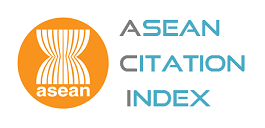DETERMINANTS OF RICE COMMERCIALIZATION LEVEL AMONG SMALLHOLDER FARMERS IN LAOS: A BETA REGRESSION ANALYSIS APPROACH
Keywords:
beta regression, commercialization rice, smallholder farmersAbstract
The Laos rice sector's transition from subsistence to commercialization, as well as its understanding of the current status of commercialization, technical efficiency, and its relationship to farmer welfare, have the potential to contribute to the literature on agricultural commercialization and serve as a lesson for relevant agencies and policymakers. This study aims to estimate the level of commercialization and identify the factors hindering its level of commercialization. The research was based on cross-sectional data from 408 farm households in Savannakhet Province. Beta regression was applied. The results indicated that the majority of smallholder farmers are semi-commercial rice producers, but they are more commercialized for dry season cultivation. The findings in beta regression revealed that in both seasons, disaster, consumption quantity, and credit accessibility had a statistically significant negative effect on rice commercialization. Meanwhile, land size cultivation had a positive statistically significant effect on rice commercialization in both seasons. In the Wet season, family size and extension accessibility had a positive statistically significant effect on rice commercialization. On the other hand, the dependency ratio had a negative statistically significant. In the dry season, family size had a positive statistically significant effect, and experience in rice cultivation had a negative statistically significant effect. Consequently, technologies that enhance land productivity must be developed and executed. Additionally, land resources in the research region are constrained. Implementing production-oriented education, training, and extension services is essential to enhance land productivity and encourage smallholder farmers' involvement in the output market.











